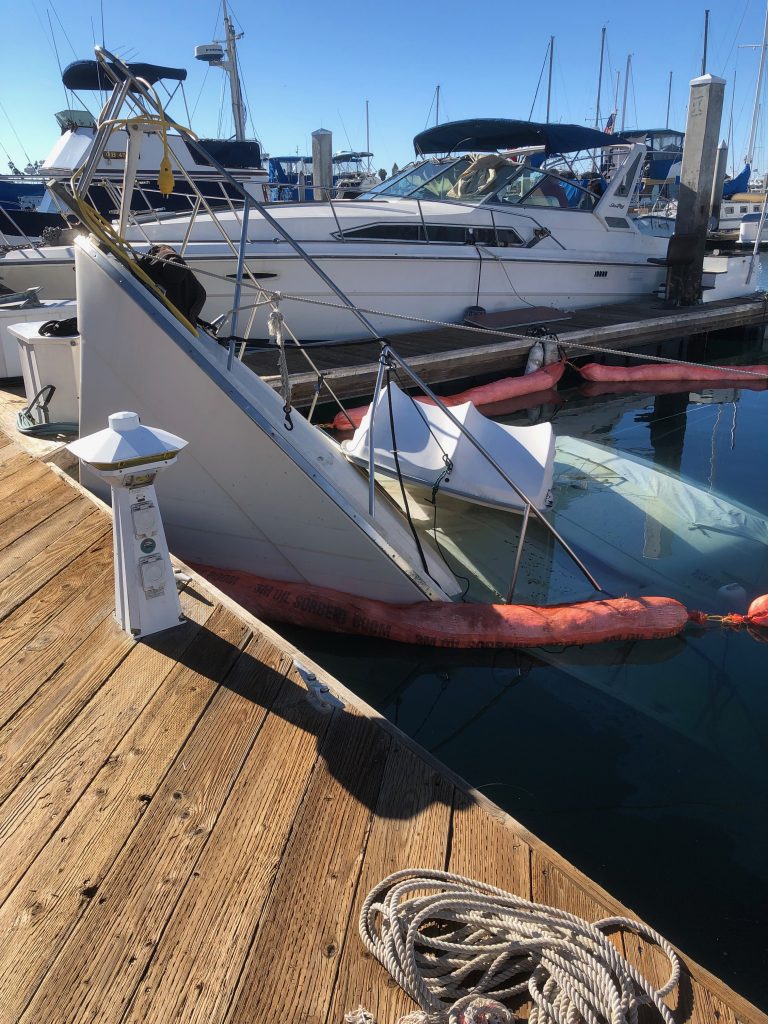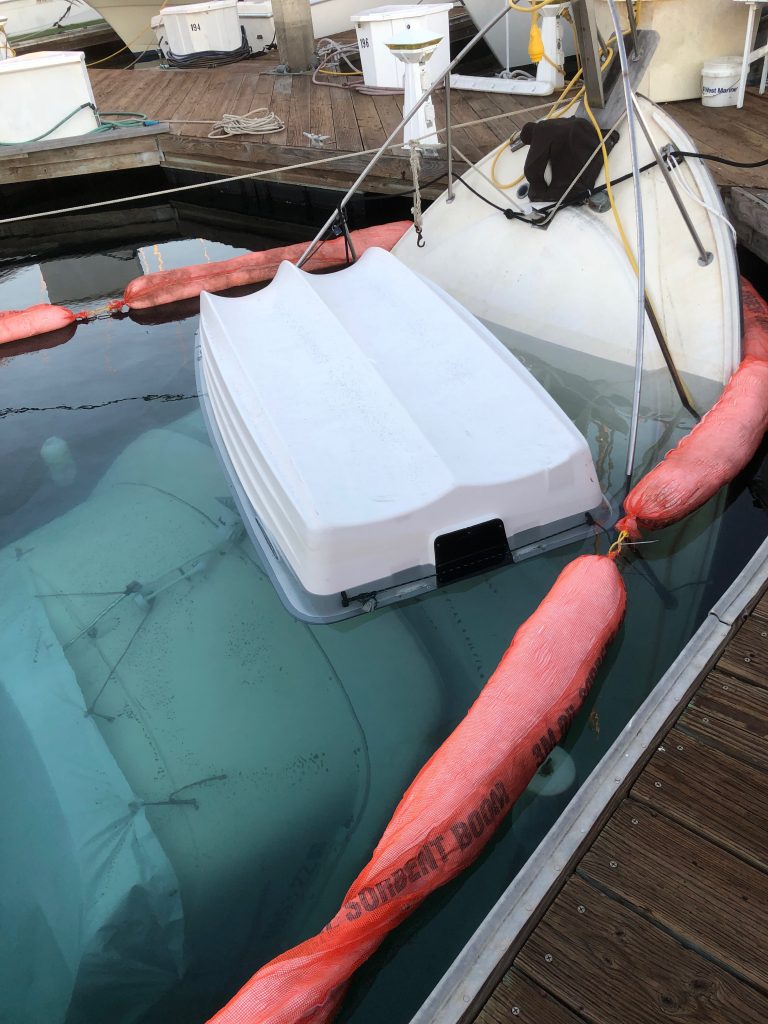It happens more often than you think.
If you spend any time hanging around the docks you will likely see or at least hear about boats sinking while tied up nice and snug. It hardly seems possible. “Boat sinks at dock” happens more often than you think.
A couple months ago I was walking down the dock like every other day. I passed a couple guys hanging around talking. Nothing out of the ordinary. As I passed I heard them talking about a boat sinking. Now they had my attention.
I stopped to see what they were talking about.
When I turned around to see what was going on . . . I saw it.

It’s funny how you can walk right by something like this and it doesn’t register.
Anyway, the story is that this thing sank within minutes. The coast guard arrived within minutes with their high volume pumps to no avail. She was lost.
We all stood around asking ourselves what happened? How could this be? No one could identify the leak before she went down and no one seems to know what caused it even after it was hauled out.
Know Your Boat
The fact is that there are a lot of holes drilled in the bottom of most boats. Each one is capped with a valve. Or should be. Often times those valves are left open. Meaning the only thing keeping back the water is a rubber hose and a couple hose clamps.
I can’t tell you how often I find rusted out hose clamps that are doing nothing. I’ve even seen a brass through hull valve simply snap off at the floor when trying to tighten the hose clamp.
Recently I noticed a stain on the floor under a heavy brass elbow on my port sea water inlet. Come to find out that there was a small hole in the elbow.
The point is that there are many parts involved in keeping the water where it belongs. Where ever there is metal in direct contact with seawater there will be corrosion. Whether it is brass or stainless steel doesn’t matter.
The only way to ensure your boat stays dry inside is to be vigilant. Making regular inspections of all through hulls is critical. You have to be a Sherlock Holmes. Look for signs of leaks everywhere.
Common Signs Of Problems
Some common signs include discoloration on metal parts. Especially those brass plumbing fittings and valves. I used to think brass would last forever. But I’ve seen many failures of brass.
Another common weak link is the stainless steel hose clamps. Especially the ones that are difficult to see or get to. They tend to be neglected.
Finally, look for signs of problems with the rubber hoses that carry sea water to its destination. If they are looking ragged around the ends, brittle or bulging close the sea water valve and replace it.
The last thing I’d like to say is . . . keep your bilge clean and dry. It makes it a lot easier to spot potential problems. And, you’ll be more likely to make those critical inspections.
Look Everywhere
Don’t overlook other potential problem areas. There are through hulls hiding in many different places.
For example, on a Columbia 36 sailboat the galley sink drain is below the water line. On my own boat I found a through hull under the galley floor and another in a cabinet in my aft cabin closet. Neither of them are connected to anything.
If a leak occurs you will be more likely to find it fast if you know where to look.
Have What You Need On Hand
If you are confronted with a problem be prepared to deal with it fast. Keep an assortment of plugs handy. Wood cones are my favorite. A friend keeps an assortment of nerf balls handy. Just make sure that whatever you have actually fits all the potential problem areas.
Know that your bilge pumps are working. Know who to call for help.
In the end, the best insurance is preventive maintenance. You don’t want to end up like this . . .

hi, we designed a wireless IoT sensor which can detect water intrusion and warn you via voice call, email, SMS and mobile app.
Please check http://www.sense4boat.com
Kind regards, Kresimir
Hello kresimir,
Thanks for your comments on my website, betterboating.us. I have visited your website and am impressed with the sense4boat sensor systems. I would like to know if these services are available in the US. Especially on the west coast.
Thanks,
Paul
Good post! We will be linking to this great article on our website. Keep up the great writing. Gloriane Banky Drobman
Good job on this article! You are a very persuasive writer. I definitely enjoy this! Nice write up. Sacha Isa Courtland
Im thankful for the blog article. Really thank you! Cool. Raeann Andre Frederich